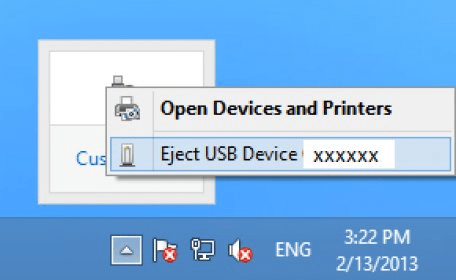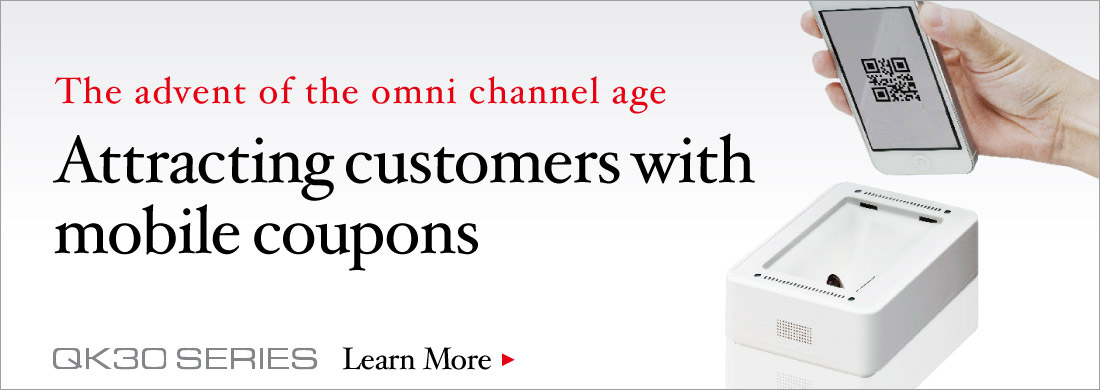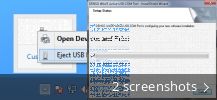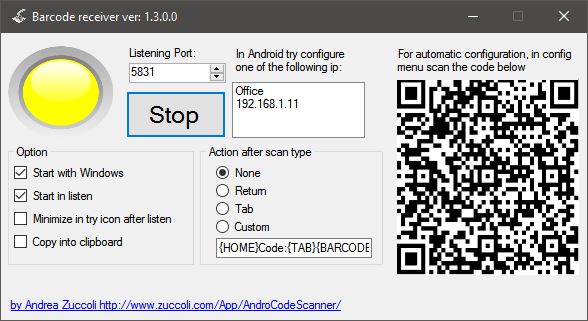This page shows an FAQ “What is the support status of Windows 10 of the Active USB-COM Port Driver?” about DENSO WAVE’s Active USB-COM Port Driver. DENSO WAVE serves as a leader in developing and manufacturing automatic data capture devices for QR codes and IC cards and industrial robots (FA equipment), etc. Sep 16, 2020 The first step is to extract the downloaded file usbcom.exe. The next is to uninstall the old USB-COM Port Driver. This page shows a list of downloadable files for the Software/Drivers/Fonts of DENSO WAVE’s automatic data capture devices. DENSO WAVE serves as a leader in developing and manufacturing automatic data capture devices for QR codes and IC cards and industrial robots (FA equipment), etc. Provide an INF file that specifies the Ports device setup class and the Serial function driver as the service for the port. To configure a serial port as COM port, comply with the requirements that are defined in Configuration of COM Ports.
- Driver Downloads For Windows 7
- Driver Download For Windows 10
- Denso Wave Port Devices Driver Download For Windows 7
I bought a cheap Chinese Mini VCI J2534 cable for diagnostics and auto settings. I used it and found that you can do a lot with it through the Toyota Techstream service program.
And here he came to me:
Package includes the drivers for the cable and the program itself-Toyota Techstream with V10.10.018 version.
Cable for diagnosis Mini-VCI J2534
I post links for download: Toyota Techstream 10.10.018 , drivers MVCI_Driver_for.msi
Then I will tell you how to install the driver and the program under Windows 7 or 8.1 x64.
The instruction can be found on the Internet , but I will write it here.
INSTALLATION INSTRUCTIONS Techstream on Windows 7, 8.1 – x64 bit
If you bought the MINI VCI J2534 cable and there is no unpacked driver on the disk, and there is only the MVCI Driver for TOYOTA.msi installer that does not really work when installed on any Windows x64 and gives an error, and it must be installed, otherwise the sw will not work, and it does not matter. This problem can be solved by installing the MVCI Driver for TOYOTA.msi manually as follows:
1. Create a folder on drive C: Temp
2. Copy to our C: Temp folder our MVCI Driver for TOYOTA.msi file
3. With Administrator rights open and run the following command:
msiexec / a “C: temp MVCI Driver for TOYOTA.msi” / qb TARGETDIR = c: temp mvci
this command will extract all content from the MSI file to the C: Temp mvci folder
4. We delete the file MVCI Driver for TOYOTA.msi from the folder C: Temp mvci, it is no longer needed, we can also remove it from the folder C: Temp
5. We go in C: Program Files (x86) and create there folder XHorse Electronics and in it one more MVCI Driver for TOYOTA TIS and move there all the contents from the folder C: Temp mvci
6. Connect the MINI VCI cable to the USB port.
IMPORTANT: When the automatic driver installation process starts, it must be canceled and the device will not be detected.
7. Open the Device Manager and locate the two faulty devices in the list. They will have a yellow icon indicating that Windows could not install the drivers for them. Now right click on the faulty device, select “Update Driver”, then “search on this computer” next “Browse my computer” … and specify the path to “C: Program Files (x86) XHorse Electronics MVCI Driver for TOYOTA TIS “(” include subfolders “check box). Click the “Next” button and wait for the drivers to be installed.
Now you should see two new devices: “Controllers USB USB Serial Converter” and “Ports (COM & LPT) USB Serial Port (COM —)”. Where instead of a line will be your figure COM port.
8. Next, go to the path “C: Program Files (x86) XHorse Electronics MVCI Driver for TOYOTA TIS” and run the file “FirmwareUpdateTool.exe”.
In the opened program, click the “Device Info” button. You should see the “connected device” graph filled.
If you see this, then your MINI VCI works under a 64-bit version of Windows and can be used by other programs, such as Techstream.
There is a connection with the cable!
9. Now install Techstream using the software “Techstream.exe” of any version. after installation do not run it yet.
10. To activate it, you need to change the TISFunction = 1 line in the C: Program Files Toyota Diagnostics Techstream Env IT3System.ini file and change it to “0” and save the file.
Driver Downloads For Windows 7
Now you need to make the program see the cable
So that Techstream sees MINI-VCI under Windows x64, the Registry should be changed like this:
1. Open the Windows Registry Editor, on Windows 8.1 x64, the path is:
[HKEY_LOCAL_MACHINE SOFTWARE PassThruSu pport.04.04 DENSO CORPORATION – TIS Techstream VIM]
But there must definitely be a folder PassThruSupport.04.04 and it has a subfolder (I have DENSO CORPORATION – TIS Techstream VIM) it should have the following parameters
: “Name” = “XHorse – MVCI”
“Vendor” = “XHorse ELECTRONICS Co., Ltd.”
“ConfigApplication” = “C: Program Files (x86) XHorse Electronics MVCI Driver for TOYOTA TIS FirmwareUpdateTool.exe”
“FunctionLibrary” = “C: Program Files (x86) XHorse Electronics MVCI Driver for TOYOTA TIS MVCI32.dll ”
” APIVersion “=” 04.04 ”
” ProductVersion “=” 1.1.0 ”
“J1850VPW” = dword: 00000001
“J1850PWM” = dword: 00000001
“ISO9141” = dword: 00000001
“ISO14230” = dword: 00000001
“CAN” = dword: 00000001
“ISO15765” = dword: 00000001
“SCI_A_ENGINE” = dword: 00000000
” SCI_A_TRANS “= dword: 00000000
” SCI_B_ENGINE “= dword: 00000000
” SCI_B_TRANS “= dword: 00000000
Also there is a section
[HKEY_LOCAL_MACHINE SOFTWARE PassThruSupport.04.04 DENSO CORPORATION – TIS Techstream VIM Parameter]
“Baudrate” = dword: 0001c200
“Comport” = dword: 00000005
“Connect” = dword: 00000000
“Interface” = “AUTOMATIC”
” Firmware “=” x ”
” LE “= dword: 00000000
” LN “= dword: 00000001
” SN “= dword: 00000000
But you can manually do nothing, but simply make changes to the registry by downloading and running this file .
2. Launch Techstream. Go to Setup | VIM select will open the menu in it should be “XHorse-MVCI”
3. Connect the MVCI cable to the USB interface, start the program, then click “Connect to Vehicle” in Toyota Techstream. If everything works, you will be asked to confirm the car / year / model, and if you connect to the car and start it, you will get access to the diagnostic interface.
The first thing to do was to turn off the orange American DRLs. other features stay tuned!
Who Viewed This Article Also Views:
Application programs rely on a combination of user-mode and kernel-mode components to capture (input) and render (output) wave streams. A wave stream is a digital-audio stream whose data format is described by a WAVEFORMATEX or WAVEFORMATEXTENSIBLE structure.
An application can use either of the following software interfaces for wave rendering and capture:
Microsoft Windows Multimedia waveOutXxx and waveInXxx functions
DirectSound and DirectSoundCapture APIs
The behavior of the waveOutXxx and waveInXxx functions is based on the capabilities of legacy wave drivers and devices. Beginning with Windows 98, the WDMAud system driver translates calls to these functions into commands to WDM audio drivers. However, by emulating the behavior of older software and hardware, the waveOutXxx functions sacrifice the 3-D sound effects and hardware acceleration that are now available through the DirectSound API. For more information about DirectSound and the Windows Multimedia wave functions, see the Microsoft Windows SDK documentation.

DirectSound and the Windows Multimedia wave functions are clients of the SysAudio system driver, which builds the audio filter graphs that process the wave and DirectSound streams. Graph building is transparent to the applications that use these software interfaces.
Driver Download For Windows 10
Wave Components
The following figure shows the user-mode and kernel-mode components that a wave application uses to render or capture a digital audio stream consisting of wave PCM data.
The rendering components appear on the left side of the preceding figure, and the capture components appear on the right. The boxes representing the wave miniport driver are darkened to indicate that these are vendor-supplied components. The other components in the figure are system-supplied.
At the top left of the figure, the wave-rendering (or 'wave-out') application interfaces to the WDM audio drivers through the waveOutXxx functions, which are implemented in the user-mode WinMM system component, Winmm.dll. The application reads blocks of wave audio samples from a file and calls the waveOutWrite function to render them.
WDMAud, which consists of both user-mode and kernel-mode components (Wdmaud.drv and Wdmaud.sys), buffers the wave data from the waveOutWrite call and outputs the wave stream to the KMixer system driver, which appears below WDMAud in the figure.
KMixer is a system component that receives wave PCM streams from one or more sources and mixes them together to form a single output stream, which is also in wave PCM format.
KMixer outputs a wave stream to a WaveCyclic or WavePci device, whose port and miniport drivers appear below KMixer on the left side of the preceding figure. The miniport driver binds itself to the port driver to form the wave filter that represents the underlying audio rendering device. A typical rendering device outputs an analog signal that drives a set of speakers or an external audio unit. A rendering device might also output digital audio through an S/PDIF connector. For more information about WaveCyclic and WavePci, see Wave Filters.
Alternatively, KMixer can pass its output stream to a USB audio device, which is controlled by the USBAudio class system driver (not shown in figure), instead of a WaveCyclic or WavePci device.
An adapter driver creates an instance of a WaveCyclic or WavePci port driver by calling PcNewPort with a GUID value of CLSID_PortWaveCyclic or CLSID_PortWavePci, respectively.

The right side of the preceding figure shows the components that are needed to support an application that captures wave data to a file. The wave-capture (or 'wave-in') application communicates with the WDM audio drivers through the waveInXxx functions, which are implemented in the WinMM system component.
At the lower right corner of the figure, the wave-capture device is controlled by wave miniport and port drivers. The port and miniport drivers, which can be of type WaveCyclic or WavePci, bind together to form a wave filter that represents the capture device. This device typically captures an analog signal from a microphone or other audio source and converts it to a wave PCM stream. The device might also input a digital audio stream through an S/PDIF connector.
The wave port driver outputs its wave stream either to KMixer or to WDMAud directly. The stream must pass through KMixer if it needs to be sample-rate converted before WDMAud receives it. A system that performs simultaneous rendering and capture of audio streams might require two instances of KMixer, as shown in the figure. Note that SysAudio automatically creates these instances as they are needed.

Alternatively, the source of the captured wave stream can be a USB audio device instead of a WaveCyclic or WavePci device. In this case, the USBAudio driver (not shown in figure) passes the stream to KMixer.
Regardless of whether the wave stream is captured by a USB device or by a WaveCyclic or WavePci device, KMixer performs sample-rate conversion on the stream, if needed, but does no mixing with other streams. KMixer outputs the resulting stream to Wdmaud.sys, the kernel-mode half of the WDMAud system driver. The user-mode half, Wdmaud.drv, outputs the wave stream to the application program through the waveInXxx functions, which are implemented in Winmm.dll. Finally, at the top of the figure, the wave-capture application writes the wave data to a file.
At the time that the wave-capture application calls the waveInOpen function to open the capture stream, it passes in a pointer to its callback routine. When a wave-capture event occurs, the operating system calls the callback routine with a buffer containing the next block of wave samples from the capture device. In response to the callback, the application writes the next block of wave data to the file.
DirectSound Components
The following figure shows the user-mode and kernel-mode components that are used by a DirectSound application program to render or capture wave data.
The rendering components are shown in the left half of the preceding figure, and the capture components appear on the right. The wave miniport drivers are shown as darkened boxes to indicate that they are vendor-supplied components. The other components in the figure are system-supplied.
At the top left of the figure, a DirectSound application loads wave data from a file to a sound buffer that the user-mode DirectSound system component (Dsound.dll) manages. This component sends a wave stream to a WaveCyclic or WavePci device, whose port and miniport drivers appear at the lower left in the figure. If a hardware mixer pin is available on the device, the stream passes directly to the wave port driver, bypassing KMixer. Otherwise, the stream first passes through KMixer, which mixes it with any other simultaneously playing streams. KMixer outputs the mixed stream to the port driver.
As before, the miniport driver binds itself to the port driver to form the wave filter that represents the underlying audio rendering device. This device might play the stream through a set of speakers, for example.
Alternatively, the wave stream can be rendered by a USB audio device instead of a WaveCyclic or WavePci device. In this case, the stream cannot bypass KMixer; the USBAudio class system driver (not shown in figure) always passes the stream to KMixer.
The right side of the preceding figure shows the components that support a DirectSoundCapture application. The application records wave data that is receives from a WaveCyclic or WavePci capture device. This device converts an analog signal from a microphone, for example, to a wave stream. The device's wave port and miniport drivers appear at the lower-right corner of the figure. As shown in the figure, the port driver receives as input the stream from the miniport driver and outputs it either directly to the user-mode DirectSound component, Dsound.dll, or indirectly through KMixer. This depends on whether a hardware capture pin is available from the capture device.
Alternatively, the source of the captured wave stream can be a USB audio device. In this case, the stream cannot bypass KMixer; the USBAudio driver (not shown in figure) always passes the stream to KMixer.
Denso Wave Port Devices Driver Download For Windows 7

If KMixer is inserted into the path of the capture stream, it performs sample-rate conversion on the stream, if needed, but does no mixing with other streams.
At the top-right corner of the preceding figure, the application reads the wave data from the DirectSoundCapture buffer and writes it to the file.